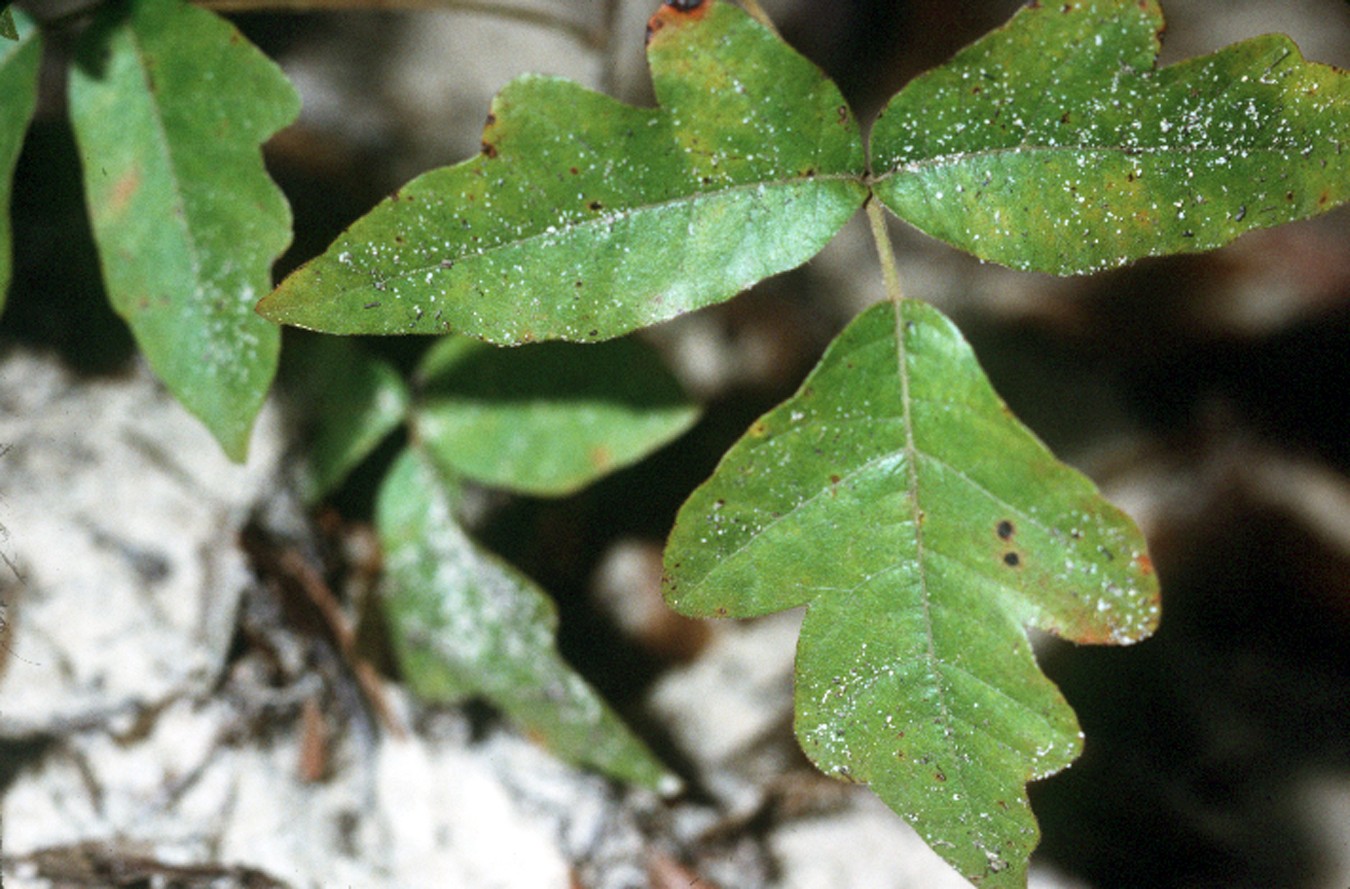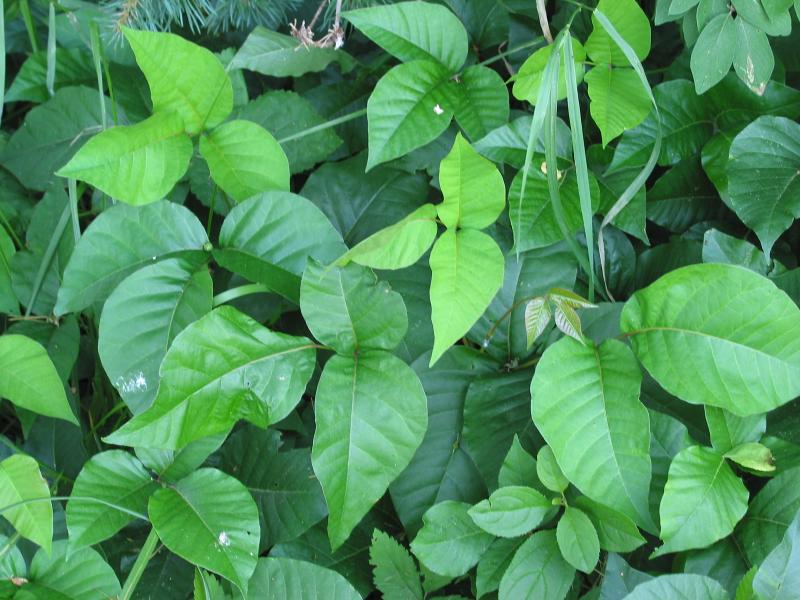A couple weeks ago, my son and I were out at our new acreage clearing brush away from the tree stumps that our pine wilt infestation left us. Despite the various implements of destruction, we spent plenty of time handling the felled foliage as we loaded it into the trailer and later back out again at the dump site. A couple days later, I discovered the hard way that there must have been some Poison Oak in the mix. This was the second time in a few years that I'd dealt with this weed, so I figured it was time to learn more about it. Here's what I found.
Poison ivy, oak, and sumac come are a family of poisonous plants (the toxicodendron genus) common in North America. The "poison" part comes from the urushiol oil that permeates the sap of these plants. 80% of people are allergic to urushiol. When it comes into contact with your skin, it prompts itching, inflammation, and then blistering.
Once contact is made, the oil bonds with the skin within 10-20 minutes. If you can wash it off with soap & water before then, you'll be happier. Once it bonds, the damage is done. The effects don't generally show up for a couple days after first contact with the weeds, and once they do, they can last for 2-5 weeks. Yup, weeks.
There is no cure for the allergic reaction, but you can treat the symptoms. Cortaid or Benadryl will help relieve the itch. My doctor even prescribed a steroid to help fight it off. The steroid definitely helped. The odd thing was, after two weeks, when the initial rash was dissipating, a second round started to appear elsewhere on my body. Not sure what was up with that. Even weirder, my son started to develop his first rash nearly ten days after initial exposure. After 2.5 weeks, my case was almost completely gone, and my son's was noticeably better.
The urushiol oil permeates the entire plant, and it doesn't go away when the plants die. In fact, the oil can last for years on a dead plant, your tools, or your clothes. It's therefore important to thoroughly wash everything after you encounter it. Burning the dead plants is a bad idea, because the oil survives in the smoke, and can cause severe respiratory problems when inhaled. How do you dispose of poison weeds, then? Seal them in a garbage bag and put them in the trash.
The good news is that once the urushiol oil has bonded with your skin and any remainder has been washed off with soap, you're no longer contagious. You can't develop the rash yourself by touching somebody else's rash. The fluid inside the blisters does not contain urusiol, so although it's gross, touching it won't spread the rash to other parts of your or anybody else's body.
Three excellent resources on this subject come from Zanfel, Tec Labs, and the Ohio State Extension Office. Also, browse through this gallery of images that shows similar plants and identifies which are and are not poison oak.
You can find more details about these weeds, including photos to help identify them, on their Wikipedia pages:
Western poison oak:
Atlantic poison oak:
Poison ivy:
Poison sumac:
Do yourself a favor. Learn to identify these plants, and if they exist in your region, definitely keep an eye out for them any time you're in a rural area.
Do you have any horror stories of encounters with poison weeds? What about tips for treating the rash? Do tell in the comments below.




No comments:
Post a Comment
Please leave your comment below. Comments are moderated, so don't be alarmed if your note doesn't appear immediately. Also, please don't use my blog to advertise your own web site unless it's related to the discussion at hand.